Portrait
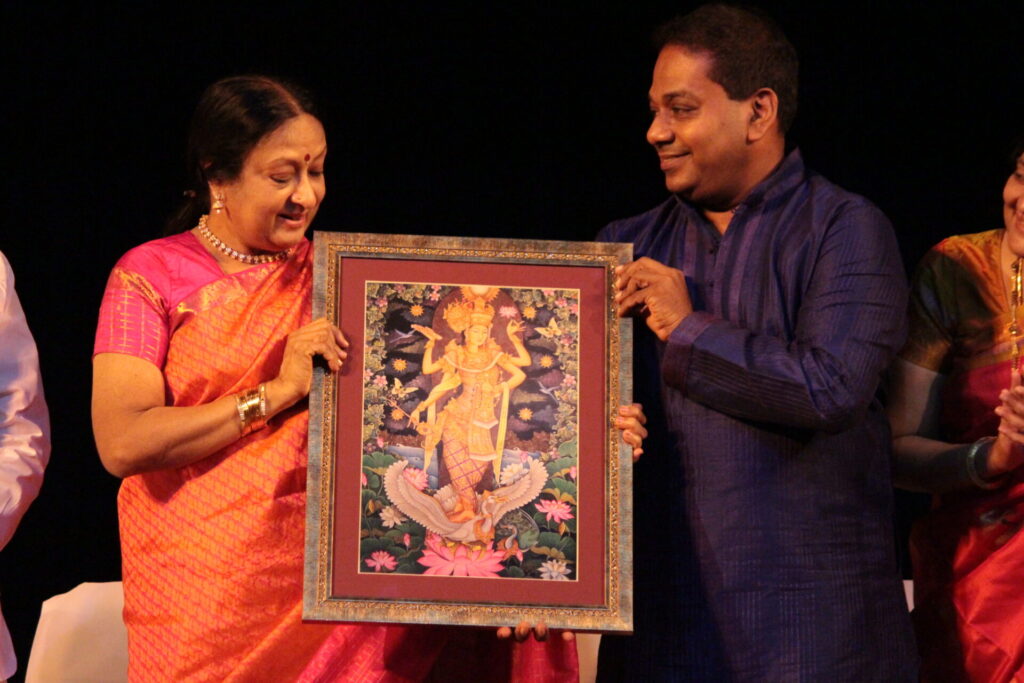
Bharatanatyam exponent, research scholar, writer, teacher and founder of the Bharatamuni Ilango Foundation for Asian Culture (BIFAC), goes back in time and recalls some precious moments that reinforce her long-standing relationship and friendship with Apsaras Arts, its founders and current Artistic Director, Aravinth Kumarasamy Can you go back a little in time and tell us about your association with Neila (Sathyalingam) Maami and Sathyalingam Maama. Actually, to start from the very beginning, my father knew Sathyalingam’s father. He was a big shot in Sri Lanka, a Minister of sorts. Thinking of it, our friendship began when Neila and Sathy (as we called him) were students at the Kalakshetra; my father had presided over their performance. I was a very young girl then but I distinctly remember Neila’s costume – a saree with a neatly pleated fan that was drawn towards the back. It really appealed to me. I was charmed both by Neila’s dance and her dress. Our family knew Sathyalingam’s family also very well. I had performed in Singapore for the Indian Fine Arts but when Neila was representing the Singapore Arts Festival, she invited me to choreograph the Valli Kalyanam piece for her; it was exciting because all the dancers and the entire orchestra had to comprise of artistes from Singapore. I was the only one from India and I had been entrusted with the responsibility of choreographing it as well as composing music for it. I was excited no doubt but I insisted that it would be great to also include Chinese dancers alongside Indian dancers and really make it a celebration of the dance fraternity of Singapore. I remember Neila being quite thrilled by this idea. Until then, the artistes of Singapore had never collaborated or performed together. I was proud to have made it happen with Neila’s support. We had a thirteen-member orchestra that also included Chinese musicians; Sathy was on the nattuvangam; Karaikudi Krishnamurthy was on the mridangam and Aravinth (Kumarasamy) played the veena. That’s when I first met Aravinth in the late 70s. I remember spending 20 days in Singapore leading up to the production and despite the initial hiccups, it all came together very well. That’s how it all began… Honestly, that’s the thing about Neila! She was, right from the start, very open-minded and creative; she always kept her eyes open to everything that happened around the world. In that sense, Neila and Sathy were a couple who were made for each other. That’s a great story; tell us more… My connection with Apsaras Arts kept growing, year on year. A few years later, a student of mine moved to Singapore and learnt dance further at Apsaras. Anytime someone from Singapore came to Chennai, they’d come over to study dance with me. In the 80s, I went to Singapore for yet another performance. The theme, this time, was around the idea of Seasons. I didn’t have much time to spend in Singapore but I worked closely with the musicians there including the Chinese and the Indonesians; I composed the music and did a rough recording for them. Thereafter, I allocated the parts to be choreographed by Apsaras Arts and other dance schools and provided them with an overall framework. What was interesting about this production was that I composed a special Thillana for this work; a raga-thalamalika wherein I took inspiration from the Asian pentatonic scale, which has only five notes. Having studied Ethnomusicology in my Masters, I used the concept of the Graha Bedham and composed a Thillana that featured five different ragams in five different srutis. I have to tell you that Apsaras Arts are still performing this Thillana, so many years later… After we premiered Valli Kalyanam, I remember Aravinth joined Apsaras Arts and went on to become the adopted son of Neila and Sathy and he continues to carry forward their legacy. In fact, through my institution, BIFAC, we conferred Neila an award titled ‘Bharatha Putri’, which has, so far, been given only to three people, the others being Professor KD Tripathi and Chemancheri Kunhiraman Nair. I think it was also the last time Neila came to India…. Over the years, you have been associated with the DIAP and IPAC; do tell us a little bit about being a mentor for IPAC? Every year artistes like Priyadarsini Govind and Rama Vaidyanathan have been conducting workshops as part of IPAC (Indian Performing Arts Convention) along with artistes from other dance forms too. The thing is, Aravinth is a very broad-minded artiste and he is also very respected in the Singapore Arts Council, because of his straightforwardness and professionalism. I do believe that Apsaras Arts has grown significantly under his mentorship. Aravinth often says that he is deeply influenced by my work. When I went to Singapore for Valli Kalyanam, I kept telling Neila that Singapore, as a country, is really at the centre of Asia and has the possibility of bringing artistes from across Asia together and become a hub for Asian culture. I think Aravinth is seeing through this idea through the many initiatives, events and productions that come from the house of Apsaras Arts. In fact, the first time Aravinth explored Cambodia was with me and my family. This was way before he went on to create the production inspired by Angkor Wat. In 2009. Aravinth wanted to travel with me to explore the sculptures of the temples in Cambodia. I was presenting a lecture at the Royal University of Phnom Penh and had interacted with the local artistes there. I demonstrated to them how the Natya Shastra has links with what we are all doing with our dance. Aravinth was there watching and taking notes all the time. On the same trip,I also had the honour of meeting the Princess Buppha Devi, whose mother, the Queen Mother, actually gave the name, Apsara to the dance of Cambodia. I interacted with them and could see how Bharata was still alive. For instance, Bharata’s mask continues
In Sights
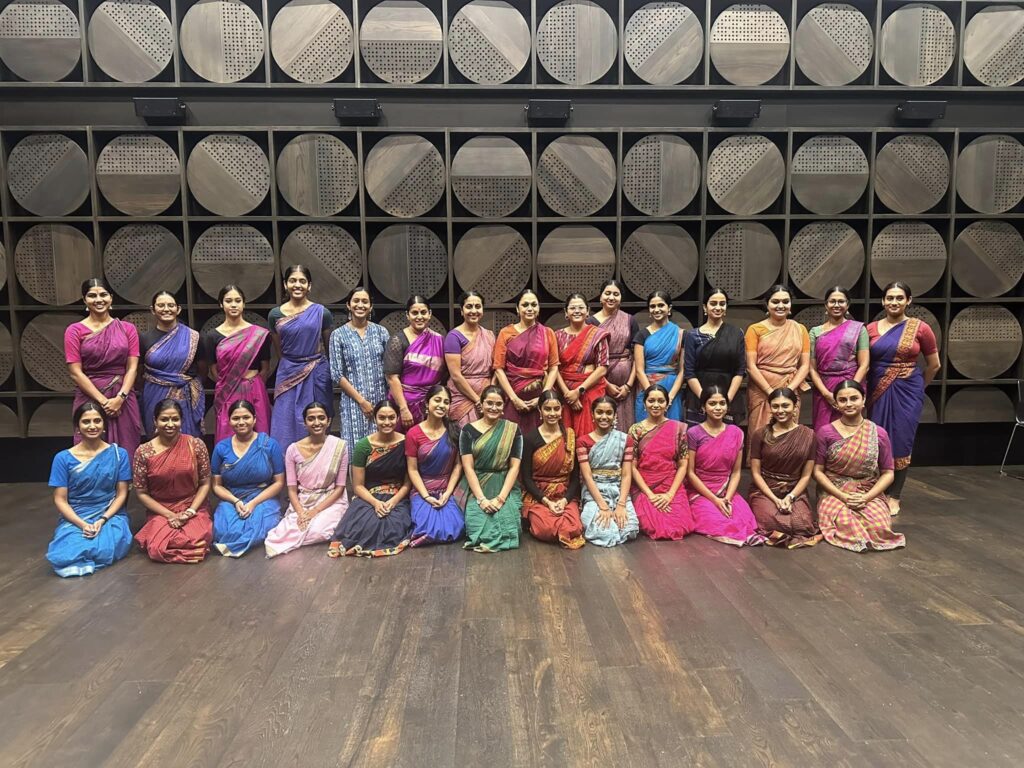
Looking back at IPAC 2024 Australia and why this edition was so special In its fourth year, Indian Performing Arts Convention (IPAC) Australia 2024 extended across nine days from May 18 until May 26, 2024. The Convention included Masterclasses by some of India’s most accomplished performers and gurus as well as lecture- demonstrations that offered insights into the beauty and complexities of Indian classical music and dance, and – of course – performances by local and international stars. The Convention was curated by Aravinth Kumarasamy, Artistic Director of Apsaras Dance Company, Singapore. The Convention also featured a Bharatanatyam showcase by Advanced and Intermediate Masterclass participants including the premiere of a new work, and a Carnatic music showcase performance by the participants of the Masterclass that included premieres of two works IPAC World Premieres One of the most exciting features of this year’s IPAC Australia was the inclusion of four world premiere performances. Three of these were the fruits of the 2023 Creative Development Residency program which offered emerging Australian practitioners the chance to work with legendary Indian mentors – PriyadarsiniGovind in Bharatanatyam, and R K Shriramkumar in Carnatic music. The first premier was – Masterpieces of Dikshitar by Akshayan Manivannan. This version of Shri Nilotpala Nayikehighlighted Dikshitar’s serene handling of the Reethigowlairagam, intact with its authentic suddha dhaivatham prayogamsand chittaiswarm passage. This was followed by a magnum opus composition – Shri Valmika Lingam, which showcased a unique, grand vision of Kamboji ragam, where Dikshitar masterfully intertwines layam and sahitya within the rarely heard kanda jathiata talam. Talam was by Krishna Ramarathinam and Mridangamwas by Sai-Nivaeithan The second premiere was – Sapta Taala Sapta Maala by Krishna Ramarathinam. The concert featured three unique pieces. The first piece was an original composition of Krishna, a Tamil Varnam composed on Lord Hanuman in Ragam Poorvikalyani. The second piece was also an original composition in Sanskrit. It was a Raagamaalika and Taalamaalika piece dedicated to the significance of Sapta (7) in Hindu Dharma. Each line explored a spiritual concept within Hindu Dharma embellished by an appropriate raaga and taala. The concluding piece was a composition by Vidushi Padma Veeraraghavan in the raga Navaneetham. The third premiere was a new work The Pursuit of Happiness created and choreographed by emerging Melbourne-based star, Rukshikaa Elankumaran under the guidance and mentorship of Priyadarsini Govind. This exciting new work involving seven dancers was developed as part of last year’s IPAC during an intense one-week in-person conception phase with Priyadarsini, and further refined with online and in-person workshopping leading up to the premiere. The Hedonic Treadmill is a psychological metaphor explaining the human tendency to pursue one pleasurable experience after another, without an increase in baseline happiness. This Bharatanatyam ensemble work explored the Vedantic philosophy behind happiness, by following the story of a young girl who manages to escape this metaphysical trap and find eternal bliss through dance, spirituality and self-realisation. The dancers included Aba Rosewinny, Alicia Roy, Aparna Shastry, Arpitha Shastry, Keerthi Jaishankar, SharanaaJeyaroopan and Rukshikaa Elankumaran. The music was directed by Beven Elankumaran and the vocals were by Ahilan Sivanandan, Shradha Ganesh, Rukshikaa Elankumaran, Beven Elankumaran. The accompaniments wereBhavani Prasad and B Muthukumar while percussion was by Satheepan Elankumaran. The fourth premiere, Three Bright Stars, was the result of an unique collaboration between three of India’s most creative and adventurous artists; singer Dr S Sowmya, violin virtuoso Lalgudi Vijayalakshmi, and Bharatanatyam artiste, Rama Vaidyanathan. Stemming from an idea by Aravinth Kumarasamy, these three ‘stars’ developed an extraordinary 90-minute work that melded new compositions by the musicians with inventive and dazzling choreography from Rama. With a significant level of improvisation, the audience was gripped by the palpable communication between the artistes. With support from local Australian legend, Ravi Ravichandhira on mridangam, and Mohanapriyan Thavarajah from Apsaras Dance Company, Singapore on the Nattuvangam, the performance exuded a palpable sense of joy and adventurousness. There is considerable interest in remounting this performance in India and Singapore.
Travel Diaries
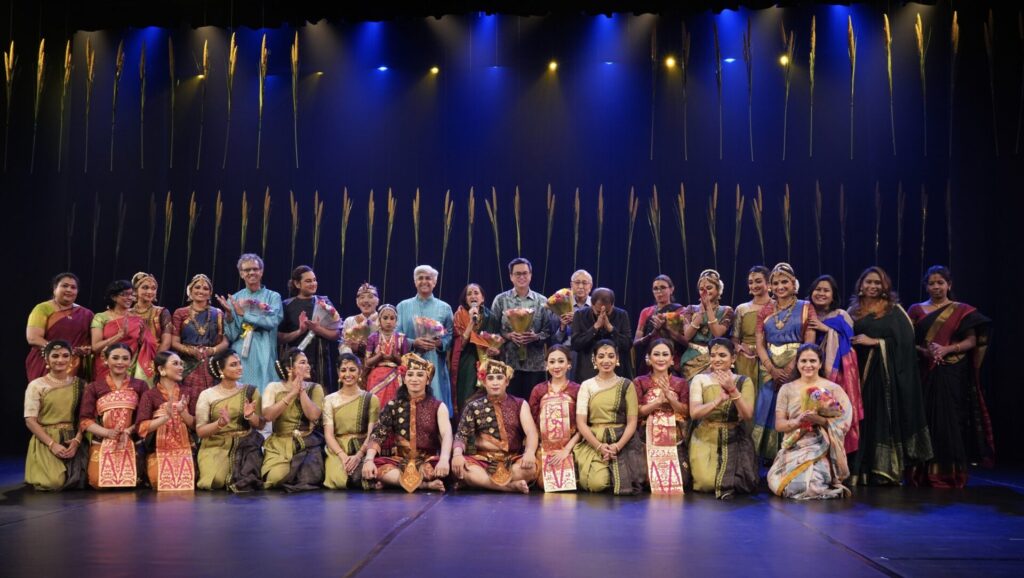
Work-in-Process
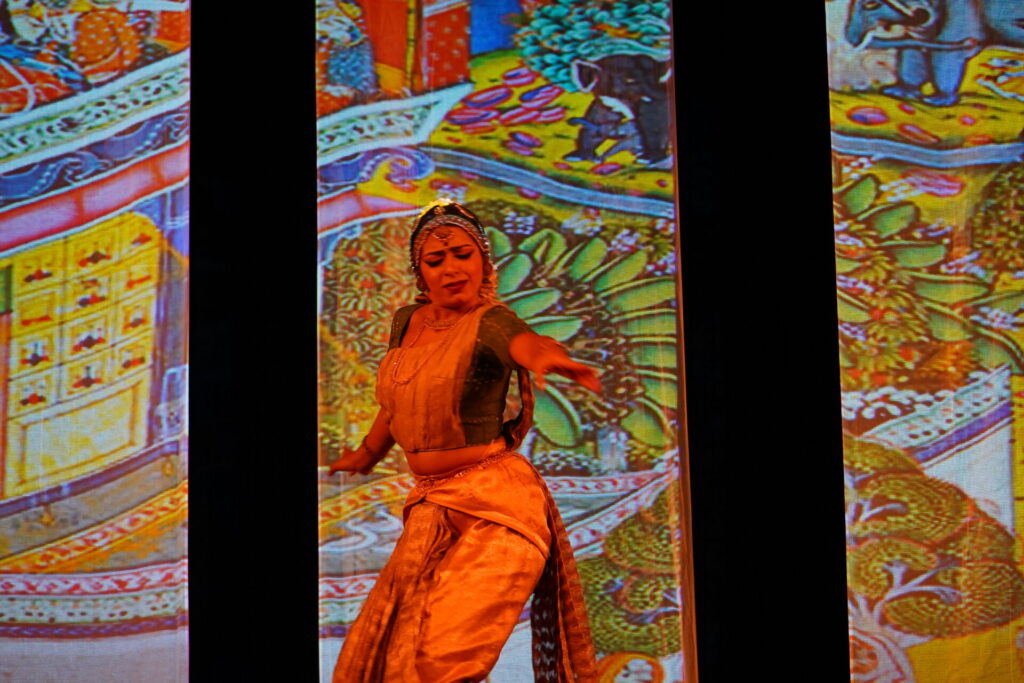
Bharatanatyam artistes, Rama Vaidyanathan and Dr Apoorva Jayaraman, who were amongst the chosen artistes who showcased their thematic new work under the umbrella of the theme, Ritu, curated by the Natyarangam festival at the Narada Gana Sabha in Chennai in August, decode their specific work and their take on its thought and treatment, in dance A Summer Surrender Dr Apoorva Jayaraman allows us insights into her treatment of Grishma When you received the theme Grishma from the Natyarangam Commitee, what was your initial response? I am born and raised in Bangalore, a city known for its great weather. Therefore, the one thing about living in Chennai that always irked me was the summer heat. It was the one thing I never managed to get used to, and I definitely did not enjoy. So, when I got to know that Grishma is the theme that Natyarangam was inviting me to work on, I thought to myself – “oh my gosh! “Irritation” is going to be my eternal sthayi bhava!!” For the first few days, the mind was a blank page. But midway in the process, I began to appreciate being commissioned to work on a theme that I wouldn’t have naturally gravitated towards, as without an “obvious” starting point. I had to go on a journey to find what it meant to me, and what I wanted to say. Personally, what is your take or relationship with summer? How much of the personal do you bring to your work, in general? Fatigued. Irritable. Underproductive. These are the first few words that I would use to describe myself in the Indian summer. But when I thought beyond this tip-of-the-tongue response, I remembered the sweet feeling of taking a shower after a tough three-hour rehearsal or class in the sweltering heat, and lying on my bed, feeling the warmth spread through my exhausted muscles. A drenched dance saree, sweat splashing from my braid… this, I realised, is the real deal, the real visual I have of the Chennai summers. One is dead by the end of a practice, but you never wish you didn’t have to do it. Spring is a time of hope and dreams. The monsoons, almost a celebration. But summer is a time of toil, a conscious journey through harsh and unfriendly times to go nearer one’s goal.I began to see summer as a time where the human spirit demonstrates an extraordinary ability for perseverance, for survival and an inexplicable thirst to soar. This personal identification is definitely where I’m drawing from and what helps me want to tell a story, or even have a story to tell. The one liner for me is “Summer – the fire in my soul”. An artist’s job is to extrapolate the specific to the generic, in a manner that it finds resonance with a large number of people, without either losing (or over indulging in) its idiosyncrasies and frailties. So to answer your question, yes, the seed is personal. The impulse for the story is personal. But the stories themselves are not necessarily so. Your concept note is an interesting exploration of a whole host of ideas that are connected with the notion of summer – romance, abundance, hope, fearlessness but also there is hardship and self-preservation; typically, what is your process of creating new work? Sometimes, the starting point of a work may simply be to explore something from an anthology of interest. I then read/explore/have conversations around the subject which slowly helps me understand the approach I want to take with the piece. Writing is the most important tool that helps me begin to articulate my ‘whys’ and to start to see a thread in my choices. Even though a first script may look either just like bare bones, or sometimes have too much clutter, the process of putting pen to paper strangely gives me the confidence to find my way. My biggest problem is knowing when to stop! In this regard, conversations with my teacher have always been my grounding factor – when I simply don’t know when to stop tweaking and fixing; or when I don’t know when to cross the threshold from research to visual stage, she has been my guide and compass. What is the kind of research that went into creating this particular work? In this particular instance, it started with reading a lot of literature to find references to summer. I read everything that came my way, shortlisting interesting portions from Kalidasa’s Rutusamharam, Kalithogai of Sangam Literature, Kavi Keshavdas’ Rasikapriya. For this particular project, Natyarangam greatly aided our process with strong starting points – talks and sharings from scholars like Dr Sudha Seshayyan. I came across a mention of some interesting songs on summer in an interview with artist Shubha Mudgal. Another of our resource persons Monali Bala helped me source and understand some of those which sounded intriguing. I had several rounds of conversations Dr Raghuraman, who each time draws me a further mile into the immensely fascinating nooks and corners of the world of Tamil literature, this time throwing at the me the exuberant verses of Kalingattuparani which embodies such potent imagination; and S Jayachandran, who always unsettles the equilibrium (in the best way) and impelled me to go beyond the “narratives” and find my eka-vakyata. In the world we live in, we don’t have the luxury of just shutting ourselves and focussing just on the work, right? How do you manage switching in and out of this process of being preoccupied with a work and also managing the everyday and the mundane? I visualise/dance in my head all the time. A lot of the creation of this work, in the sense of visualisation, has been happening outside the studio – in transit in an airport, in an auto getting from class to home, lying on bed waiting for sleep to hit etc. This time around I’ve also been doing some of the work on my students. This has been a fairly
Anjana: Mother of Hanuman
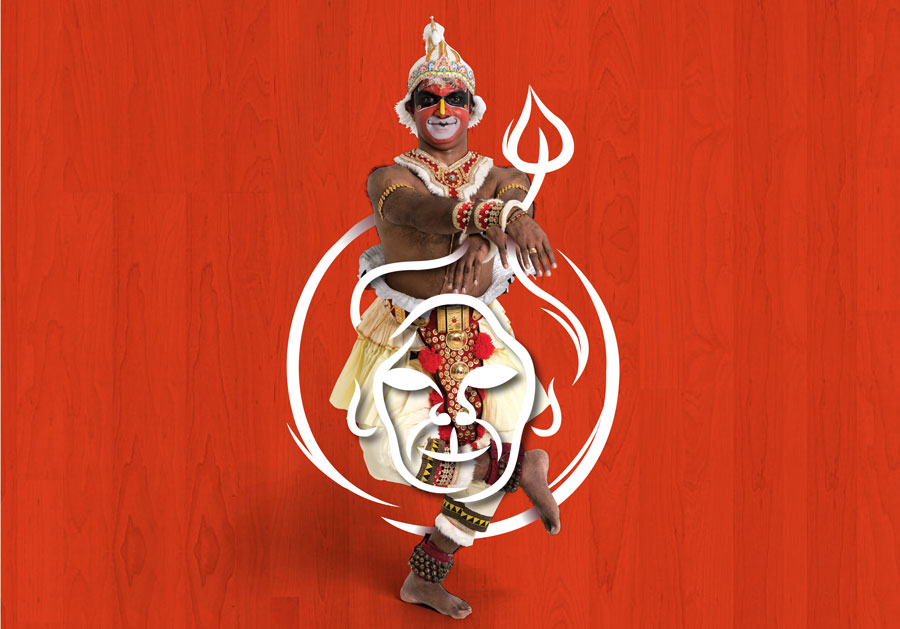
An insight from the concept of Anjaneyam: Hanuman’s Ramayana Hanuman was born to the humanoid creatures called the vanaras. His mother Anjana was an Apsara named Puñjikastalā, who was born on earth as a vanara princess due to a curse from sage Durvasa, and she married Kesari, a vanara chief. She was redeemed from this curse on her giving birth to a son. The Valmiki Ramayana states that his father Kesari was the son of Brihaspati and that Kesari also fought on Rama’s side in the war against Ravana. Anjana and Kesari performed intense prayers to Shiva to get a child. Pleased with their devotion, Shiva granted them the boon they sought. Hanuman, in another interpretation, is the incarnation or reflection of Shiva himself. Hanuman is often called the son of the deity Vayu; several different legends account for the Vayu’s role in Hanuman’s birth. One story mentioned in Eknath’s Bhavartha Ramayana (16th century CE) states that when Anjana was worshiping Shiva, the King Dasharatha of Ayodhya was also performing the ritual of Putrakama yagna in order to have children. As a result, he received some sacred pudding (payasam) to be shared by his three wives, leading to the births of Rama, Lakshmana, Bharata, and Shatrughna. King Dasaratha gave the pudding to Kausalya and Kaikeyi. However as Dasaratha was about to hand over the pudding to Queen Sumithra, a bird snatched the payasam and flew away from there. Both Kausalya and Kaikeyi immediately gave a portion of their own pudding to Queen Sumithra, because of which Queen Sumithra gave birth to twins – Lakshmana and Shatrugana. Queen Kausalya gave birth to Ram, the hero of Ramayana and Queen Kaikeyi gave birth to Bharat. The bird which stole the payasam also has a story. The bird was actually an Apsara – Suvarchala. Suvarchala was very impulsive and often acted without thinking. Once because of her impulsive behaviour, Lord Brahma got very angry with her and cursed her that she would become a bird. Suvarchala promised Lord Brahma that she had repented her ways. Lord Brahma said that his words could not be taken back and that Suvarchala would have to go to earth and stay as a bird. Lord Brahma however modified the curse and said that Suvarchala was to be freed from her curse if she touched the pudding given by Lord Agni to Dasaratha. Eager to have her curse lifted, Suvarchala snatched the pudding from Queen Sumitra. Immediately she changed form and became an apsara. The payasam fell from the bird’s claws and was falling to the ground when Vayu, the Wind God following the orders of Lord Shiva, blew the pudding softly without spilling it to the outstretched hands of Anjana, who consumed it. Hanuman was born to her as a result and was named “Anjaneyan, the son of Anjana. Birthplace of HanumanThere are multiple places in India are claimed as the birthplace of Hanuman 1) According to one theory, Hanuman was born on Anjaneya Hill, in Hampi, Karnataka.This is located near the Risyamukha mountain on the banks of the Pampa, where Monkey King Sugreeva and Lord Rama are said to have met in Ramayana Legend. 2) Anjan, a small village about 18 km away from Gumla, Bihar , houses ANJAN DHAM , which is said to be the birthplace of Lord Hanuman. The name of the village is derived from the name of the goddess Maa Anjani, the mother of Hanuman. Aanjani Cave, 4 km from the village, is believed to be the place where Mata Aanjani once lived. Many objects and items of archaeological importance obtained from this site are now held at the Patna Museum. 3) The Anjaneri (or Anjneri) mountain, located 8 km from Trimbakeshwar in the Nasik district, is also claimed as the birthplace of Hanuman. One has to trek around 6 kms up from the base of the trek to reach the birth place. 4) A cave in a hill near Gokarna, one of the oldest temple towns of India, is also said to be the birthplace of Hanuman. This cave has had a Hanuman temple for a long time. Gokarna, situated in west coast of Karnataka, is known for Atma Linga of Shiva, installed by Ganapathi to save it from the hands of Ravana long before Ramayana days.
Anjaneyam: Hanuman’s Ramayana
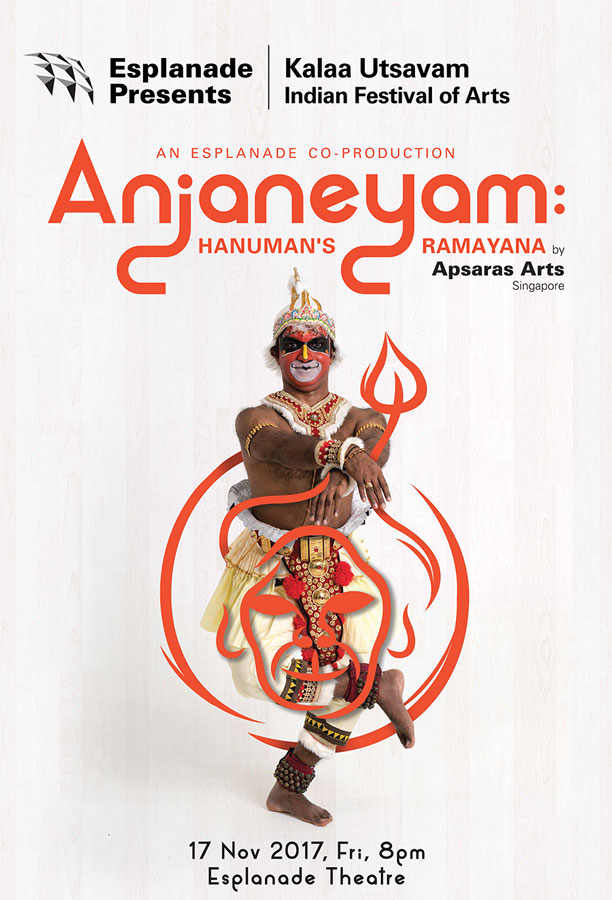
Synopsis For centuries, the ancient Indian epic The Ramayana has captured the imagination of Asia with its universal themes of righteousness, love, loyalty and frailty. One of the most beloved characters in the story is the monkey god Hanuman, who plays a crucial role in Prince Rama’s quest to rescue his wife, Sita, from the 10-headed demon king Ravana. Follow the life and adventures of Hanuman, from the time of his birth, to his meeting with the exiled Prince Rama, and to the heroic battle against Ravana and his forces. Watch the story unfold through dance and music, and bear witness to the birth of The Ramayanawhen Hanuman encounters its author Maharishi Valmiki. Conceptualised by Apsaras Arts, this cross-cultural production puts together a creative team from around Asia including Era Dance Theatre (Singapore), Kalakshetra Repertory Theatre (India) and Bimo Dance Theatre (Indonesia). It features an arresting juxtaposition of Indian and Southeast Asian depictions of the epic, told through bharatanatyam and Javanese dance and set to a stirring, original score. Creative Team Concept, Script and Artistic Direction: Aravinth Kumarasamy Research: Dr Sudha Sheshyan, Dr Pappuvenugopla Rao, Dr Charu Madhavan Music Composition: Dr Rajkumar Bharathi Music Co-Direction and Sound Design: Sai SharavanamChoreography: Mohanapriyan Thavarajah, Jayanthi Subramaniam, Hari Padman and Osman Abdul HamidDramaturge: Lim How Ngean Costume Design:Mohanapriyan Thavarajah Lighting Design & Projection Mapping Design Concept: Gyan Dev Singh Projection Mapping and Animation:Knownsense Studios Rehearsal Master: Renjith Babu Gallery Reviews Anjaneyam: Hanuman’s Ramayana brought to life once more. Cultural ties that bind India and South East Asia at PBD 2018 (Read more) – Connected to India, Garima Kapil “I laud the efforts of the whole team, in producing a show, given a limited time frame, without a dull moment, and with enough showmanship to keep the audience engaged for three hours – ” (Read more) – Narthaki, Lakshmi Vishvanathan “Carrying forward the narrative, flashback was used, and imaginative use of chorus, a la Greek theatre, reflecting what the main character is thinking. Such a large scale production deserves to be seen in other cities, where Ramayana is known to everyone and its performances are a living tradition” (Read more) – Narthaki, Padmashri Dr. Sunil Kotari “Apsaras Arts ‘Anjaneyam – Hanuman’s Ramayana’ staged at Singapore recently stood out for its cross-cultural appeal” (Read more) – The Hindu Padmashree, Dr.Sunil Kotari “It was heartwarming to see the impact of Anjaneyam on the excited crowd, their eyes completely locked on the action unfolding before them. Anjaneyam is completely deserving of the standing ovation it received at the end of the performance, a testament to the incredible talent we witnessed tonight from Singapore, India and Indonesia. This is precisely what a cross-cultural event at the Esplanade should feel like; a melting-pot of cultures and abilities coming together to produce an epic show that will live on deep in our hearts and minds, one we won’t be forgetting anytime soon.” (Read more) – Backchormeeboy “Mega dance-drama Anjaneyam — Hanuman’s Ramayana stood out with stunning visuals, exquisite dancing and excellent story-telling” (Read more) – Tabla Singapore, Padmashree Dr.Sunil Kotari Tour Performance Book the Show Anjaneyam is available for tours. Please contact apsaras.arts@gmail.com / kumarasamy.aravinth@gmail.com for more information
European Tour
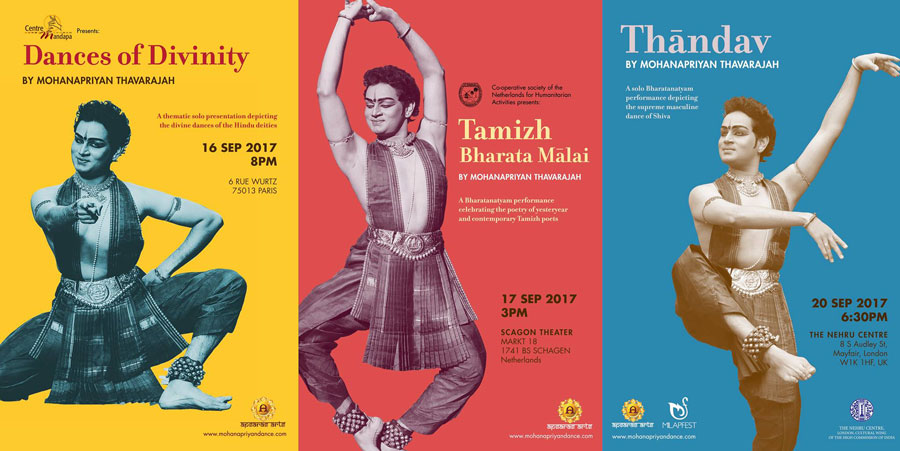
Mohanapriyan Thavarajah from Apsaras Arts will be on an European tour during September 2017 performing a collection of thematic solo Bharatanatyam performances, including “Dances of Divinity”, “Tamizh Bharatha Maalai” and “Tandav”. Mohanapriyan will be conducting a workshop for Milapfest on Saturday 22nd at Liverpool.Please find the following details of the shows and ticket details. Paris Centre Mandapa Saturday 16/09/17 at 8pm For tickets: www.weezevent.com/dances-of-divinity-mohanapriyan-tavarajah Netherlands Scagon Theatre Sunday 17/09/17 at 3pm For tickets: www.scagontheater.nl London Nehru Centre Wednesday 20/09/17 at 6.30pm For tickets: www.nehrucentre.org.uk/events/details/article/shiva-tandava-h3bharatanatyam-h3-h3mohanapriyan-thavarajahh3.html
Navarathri
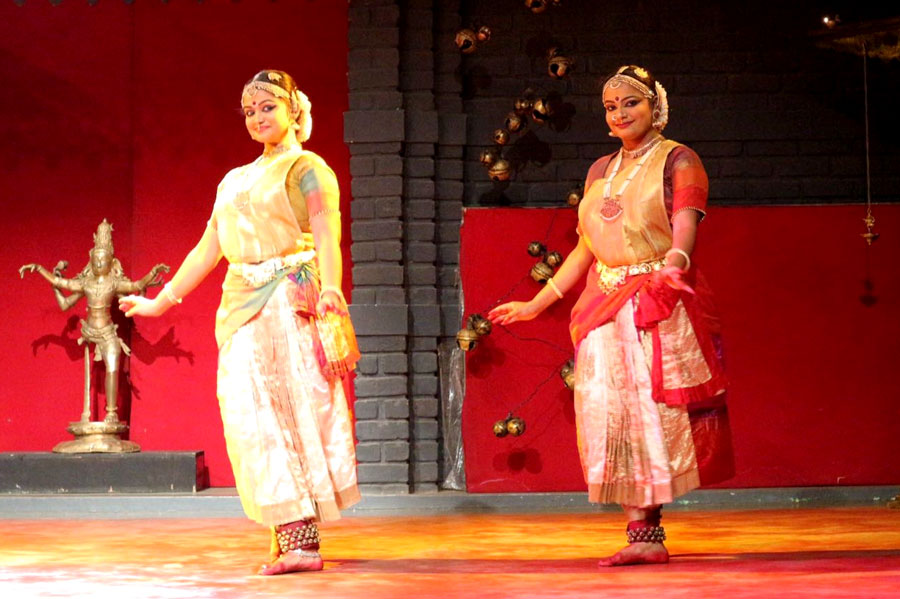
Following the tradition being followed in the past many decades, dancers from the Apsaras Arts Dance Company and dance students from Apsaras Arts Academy will be performing for the annual Navarathri celebrations across Singapore. Please see details below Sri Vadapathira Kaliamman Temple 555 Serangoon Rd, Singapore 218174 on Friday 22nd September, 2017, 8:50 pm Sri Mariamman Temple 244 South Bridge Rd, Singapore 058793 on Sunday 24th September, 2017, 8:50pm Sri Thendayuthapani Temple 15 Tank Rd, Singapore 238065 on Wednesday 27th September 2017, 9:00pm Sri Senpaga Vinayagar Temple 19 Ceylon Rd, Singapore 429613 on Friday 29th September 2017, 7:30pm
Vijayadasami
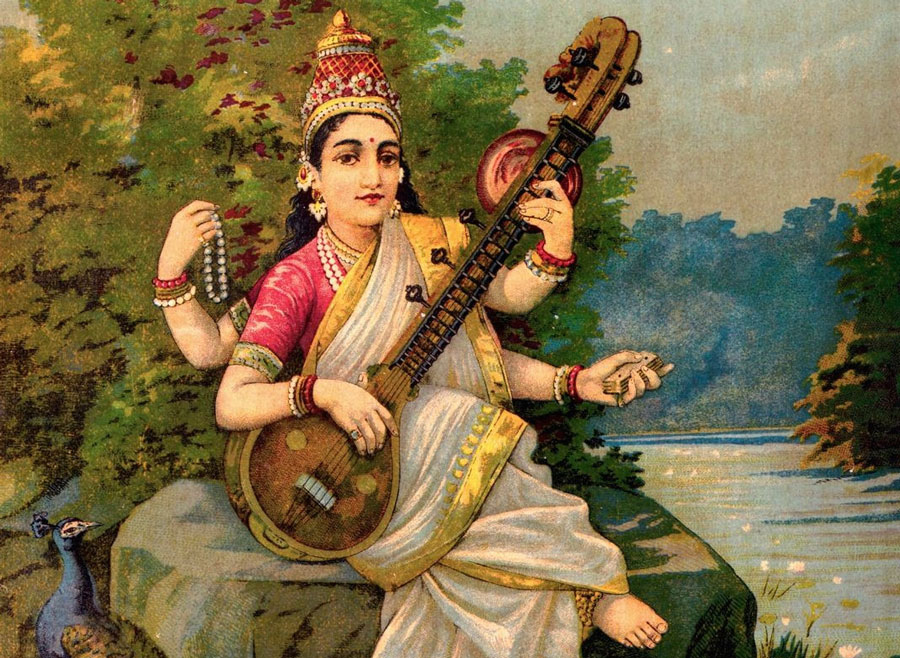
On Vijayadasami day which falls on the tenth day of Navarathri, it is a tradition to pay respects to your Gurus and to partake in the Vidhyarambam observation where very young children and anyone who wants to pick up a new art from are initiated in to the learning. Please find the following details on the Vijayadasami celebrations at Apsaras Arts. Saturday 30th September 2017, at Apsaras Arts studios, Block D #01-24, Goodman Arts Centre, 90 Goodman Road, Singapore 439053 7:30am to 9:00am: Homam and Pooja 10:00am to 12:00pm :Initiation to new classes
Apsaras Arts at UTSAV
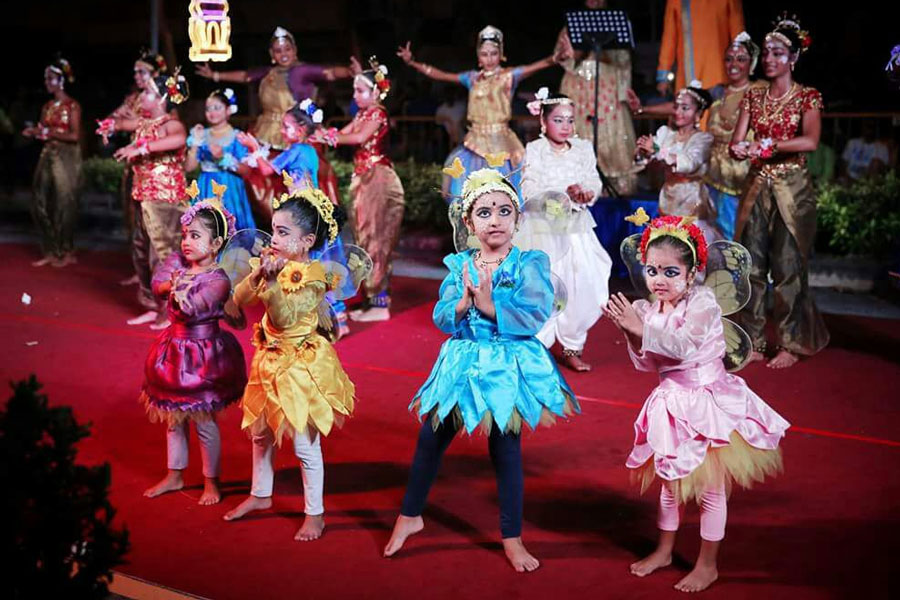
Apsaras Arts Academy students at UTSAV 2017 Street Parade, heralding in the Deepavali festivities with cultural performances by local and international artistes. The performance by Apsaras Arts Academy students was themed as “Apsaras in the Gardens” and featured Kathak and Bharatanatyam genres of Indian classical dance. Dance students as young as 4 years were part of the 45 member strong team from Apsaras Arts Academy.